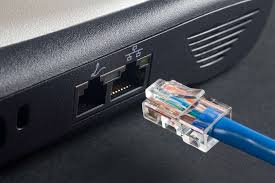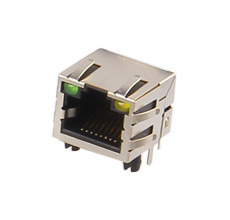Introduction:
Whether you're building a new networking product or upgrading an existing one, the SFP (Small Form-Factor Pluggable) interface is a key component to consider. But what exactly is an SFP cage, and how do you choose the right one for your network device? In this article, we'll explain what an SFP cage is, why choosing the right one matters, and how to select the best cage for your needs.
1.What Is an SFP Cage?
An SFP cage is a metal enclosure mounted on a network device's circuit board. It's designed to house an SFP transceiver module—the component that sends and receives data over fiber optic or copper cables.
Think of the SFP cage as a docking station. It doesn’t do the actual data transmission, but it provides the physical and structural support for the SFP module to connect securely to the device.
The cage also has two very important jobs:
Protecting the module and connector
Helping with heat dissipation and EMI shielding (electromagnetic interference)
2.Why Is Choosing the Right SFP Cage Important?
If you choose the wrong SFP cage, you could end up with connection issues, overheating, or even mechanical failure. The cage plays a vital role in ensuring:
Stable module connection
Proper heat dissipation
Reduced interference with other electronic components
Long-term durability of your device
Whether you're a product designer, buyer, or curious tech enthusiast, selecting the right cage helps ensure your device works reliably in real-world environments.

3.How to Choose the Right SFP Cage
3.1Understand the Type of SFP Module You'll Use
Before choosing the cage, you need to identify the type of SFP module your network device will use. Different modules have different speed capabilities, heat output, and connector placements. Matching the cage to the module ensures proper fit, electrical contact, and performance.
Common SFP module types include:
|
Module Type |
Speed |
Common Applications |
Example Devices |
|
SFP |
1 Gbps |
Basic Ethernet networking, office switches |
Cisco Catalyst 2960, Ubiquiti EdgeSwitch |
|
SFP+ |
10 Gbps |
Data centers, enterprise backbone switches |
Dell S4048-ON, MikroTik CRS317 |
|
SFP28 |
25 Gbps |
High-performance servers, cloud computing nodes |
Arista 7060X, Juniper QFX5200 |
Port Configurations:
Single Port: One module per cage (most common)
Ganged Ports: Multiple ports side-by-side
Stacked Ports: Vertical arrangements for high-density designs
Selecting a cage that matches both your module type and your intended port configuration ensures compatibility and smooth integration. Also, remember that higher-speed modules (like SFP+ and SFP28) run hotter. They may need cages with enhanced cooling features (such as better ventilation or even attached heat sinks) to handle the extra heat.
3.2Choose the Right Mounting Style
The way an SFP cage mounts to the PCB (printed circuit board) significantly influences the manufacturing process, the mechanical strength of the connection, and the device's long-term reliability. There are three common mounting styles to consider:
|
Mounting Style |
Description |
Typical Use Cases |
|
Through-Hole Mount (THM) |
Metal pins pass through holes in the PCB and are soldered on the other side. Very strong and durable. |
Industrial equipment, devices exposed to vibration |
|
Surface Mount Technology (SMT) |
Cage is soldered directly onto the surface of the PCB. Compact and compatible with automated assembly. |
Consumer electronics, modern switches |
|
Press-Fit |
Pins are mechanically pressed into plated holes without soldering. Easy to install and remove. |
Prototyping, modular designs, serviceable products |
Tip:
SMT is widely used in high-volume manufacturing due to its compatibility with automated soldering and compact layout.
Press-fit is ideal for designs that may require easier maintenance or replacement, such as hot-swappable modules or test equipment.
THM is great for rugged applications where long-term physical durability is essential.
Choosing the right mounting method helps optimize assembly cost, durability, and ease of maintenance.

3.3Pay Attention to Cage Dimensions and Port Count
When selecting an SFP cage, the physical configuration is just as critical as electrical compatibility. Cages come in several layout types, each designed for different performance and space requirements:
|
Cage Type |
Description |
Use Case Example |
|
Single Port Cage |
Holds one SFP module. Simple, compact, and easy to install. |
Home routers, edge switches |
|
Ganged Cage |
Multiple cages side-by-side in a single unit (e.g., 2x1, 4x1) |
Enterprise switches, small form-factor servers |
|
Stacked Cage |
Ports arranged vertically (e.g., 2x2) for high port density |
Data center switches, high-density equipment |
What to Consider:
Number of network ports your device needs
Available PCB space for mounting the cage
Thermal and airflow requirements, especially for multi-port setups
Ease of cable access in your enclosure design
If your product targets compact or rack-mounted environments, stacked or ganged configurations help maximize port density without increasing footprint.
Tip: Leave enough spacing between adjacent cages to ensure proper airflow and prevent overheating. In densely packed designs, consider cages with built-in ventilation holes or those compatible with heat sinks.
3.4Look for EMI Shielding Features
Electromagnetic interference (EMI) can degrade signal quality, disrupt communication, and reduce network reliability—especially in dense environments like data centers or industrial control systems.
High-quality SFP cages include EMI fingers, grounding springs, or side shields that make direct contact with the inserted SFP module. These features create a conductive path to the ground, effectively reducing noise and blocking unwanted interference.
|
EMI Feature |
Function |
|
EMI Fingers |
Maintain contact with the module for continuous shielding |
|
Ground Tabs/Springs |
Provide grounding paths to PCB to prevent static buildup |
|
Fully Shielded Design |
Encases module to block external noise sources |
Tip: If your device will be used in high-density environments with multiple modules operating simultaneously—such as 10G/25G switches in data centers—investing in cages with advanced EMI shielding can help ensure signal integrity and performance.
3.5Check Industry Standards and Compatibility
When selecting an SFP cage, ensuring industry compliance is key to avoiding connectivity issues and ensuring smooth integration with transceiver modules.
Look for cages that follow widely recognized standards such as:
|
Standard |
Description |
|
SFF-8431 |
Specifies electrical interfaces for SFP+ |
|
SFF-8083 |
Defines general mechanical specs for SFP modules |
These standards help maintain compatibility across different brands and products, making it easier to mix and match components without risk.
3.6 Don’t Forget the Cost vs. Quality Balance
It’s tempting to cut costs on small components like SFP cages, but poor-quality cages can create bigger problems down the road.
Low-cost cages may:
Be constructed with thin or poor-quality metals
Offer minimal or no EMI shielding
Wear out quickly with repeated module insertions
Cause alignment or connectivity issues over time
Recommendation: Strike a balance—look for competitively priced cages that still meet essential criteria like shielding, durability, and certification. For commercial or mission-critical devices, always prioritize functionality and reliability over initial savings.
Conclusion:
Choosing the right SFP cage might seem like a small detail, but it can make a big difference in how your network device performs and lasts over time.
If you're a product manager, engineer, or buyer—taking a bit of extra time to choose the right cage can save a lot of trouble down the line.
Need Help Choosing an SFP Cage?
Contact GLGNET for customized SFP cage solutions designed to meet your product’s unique requirements. Our team of engineers specializes in high-reliability networking components.